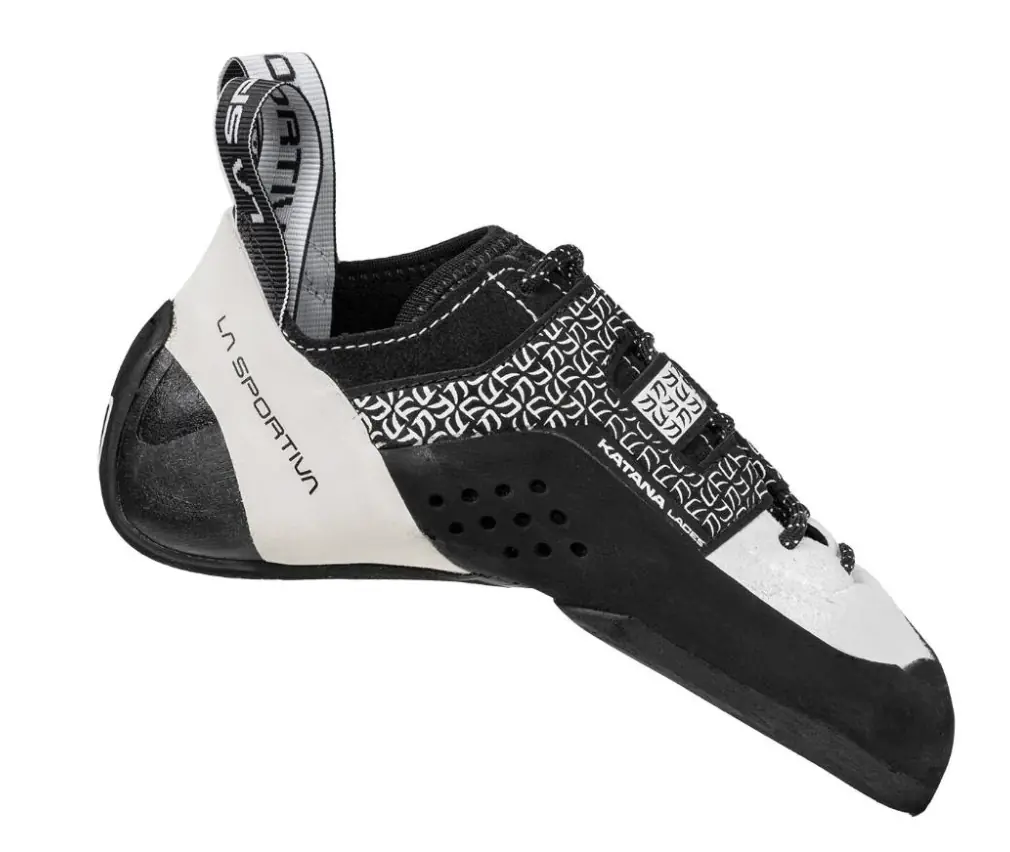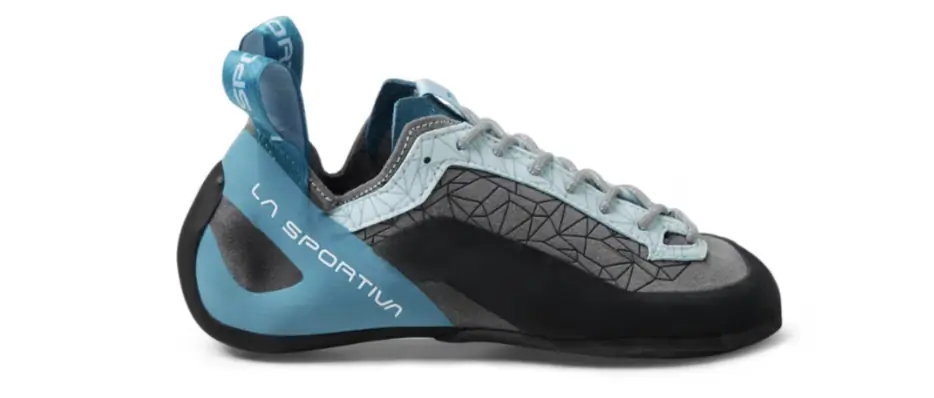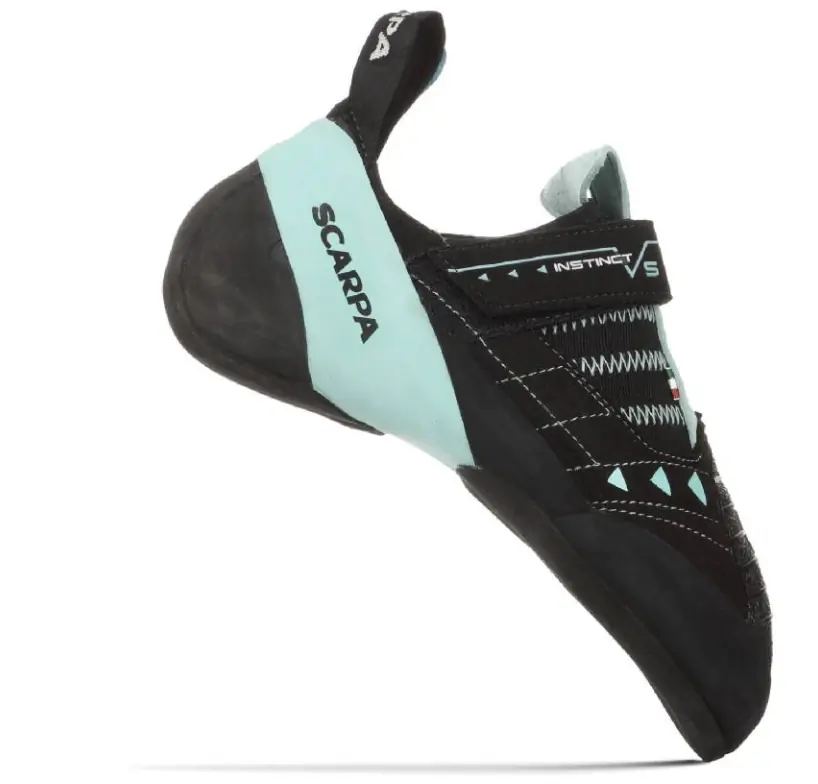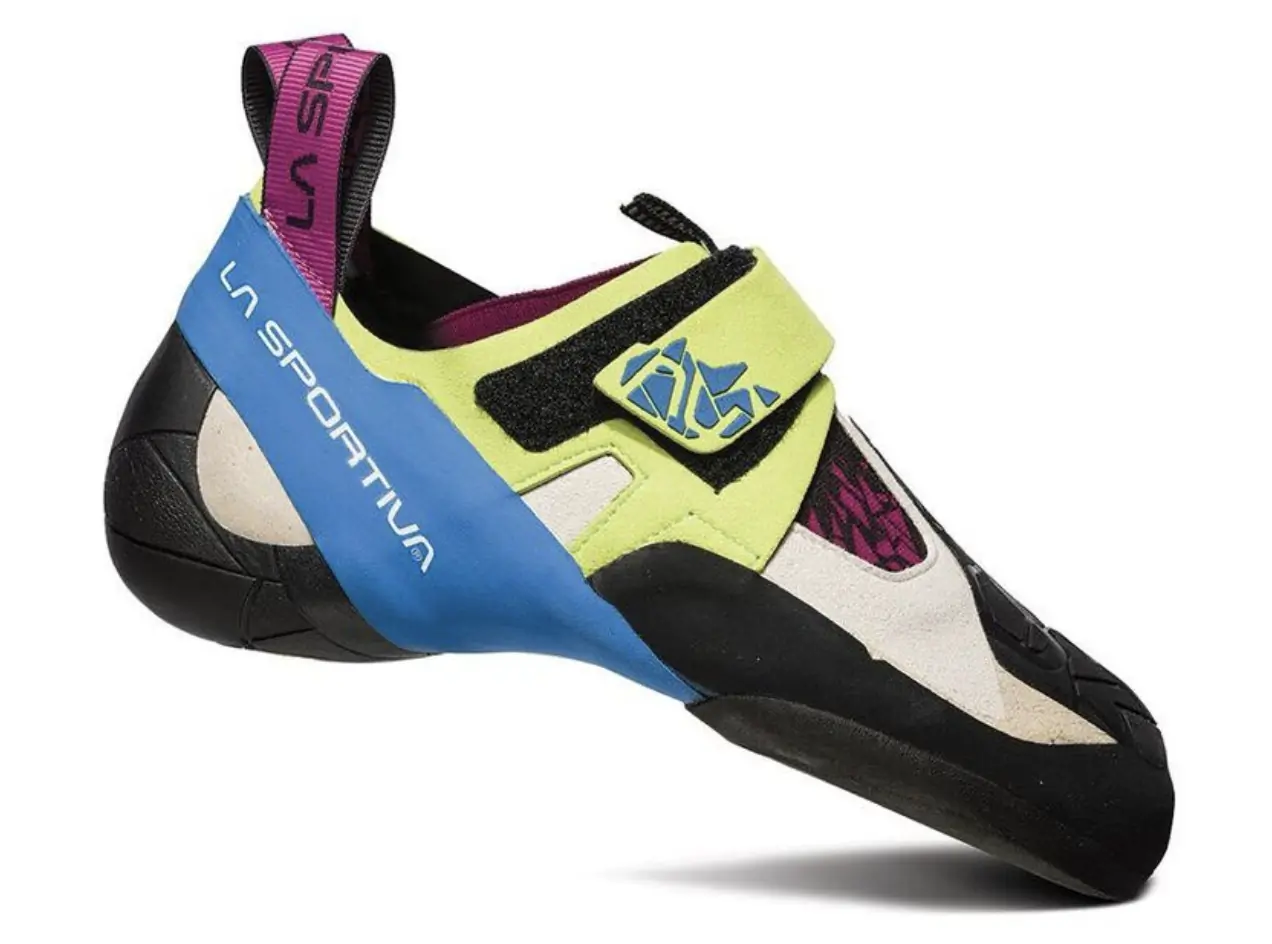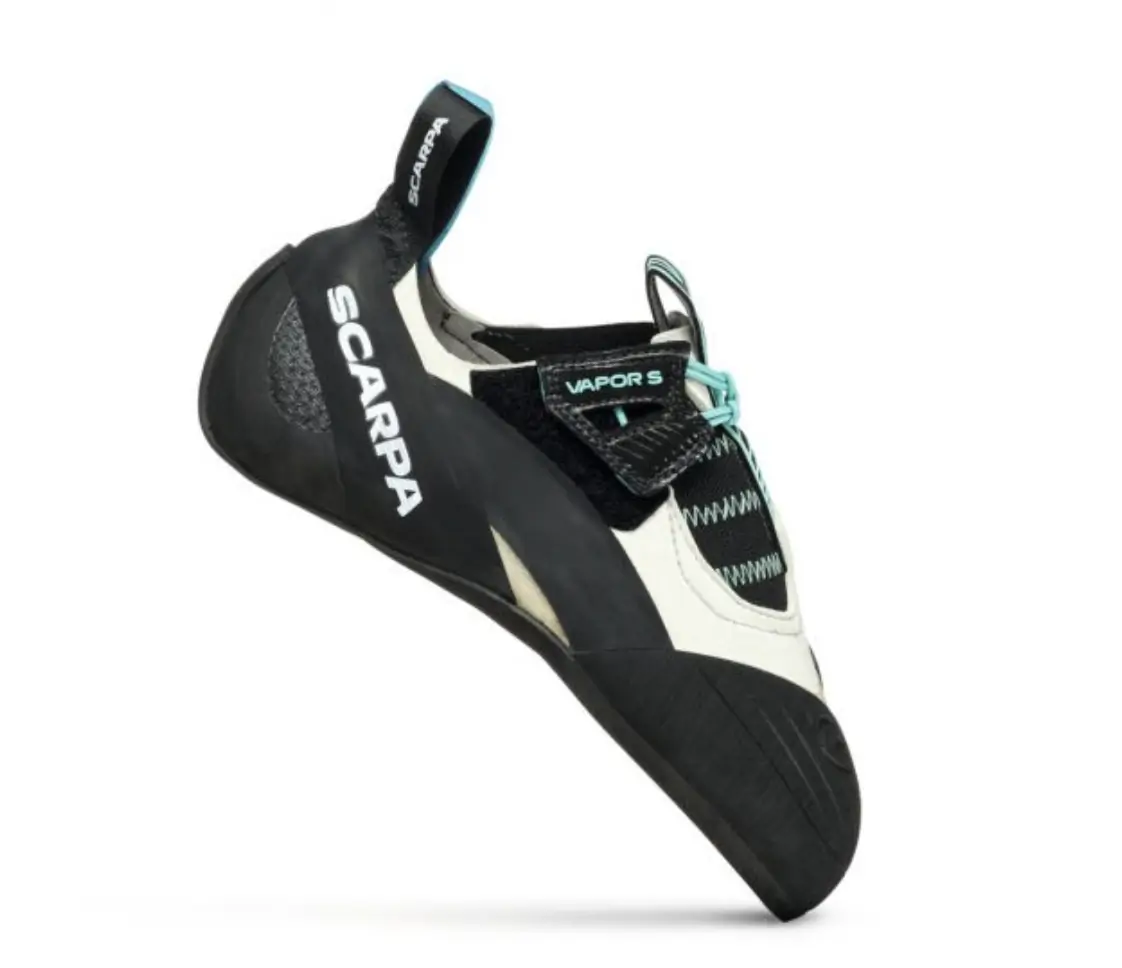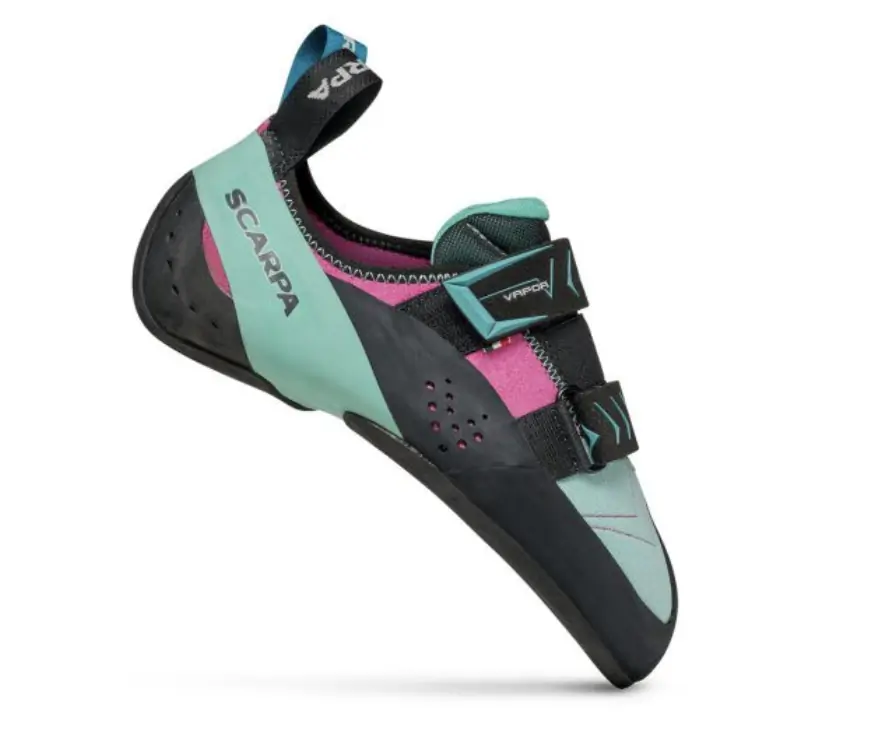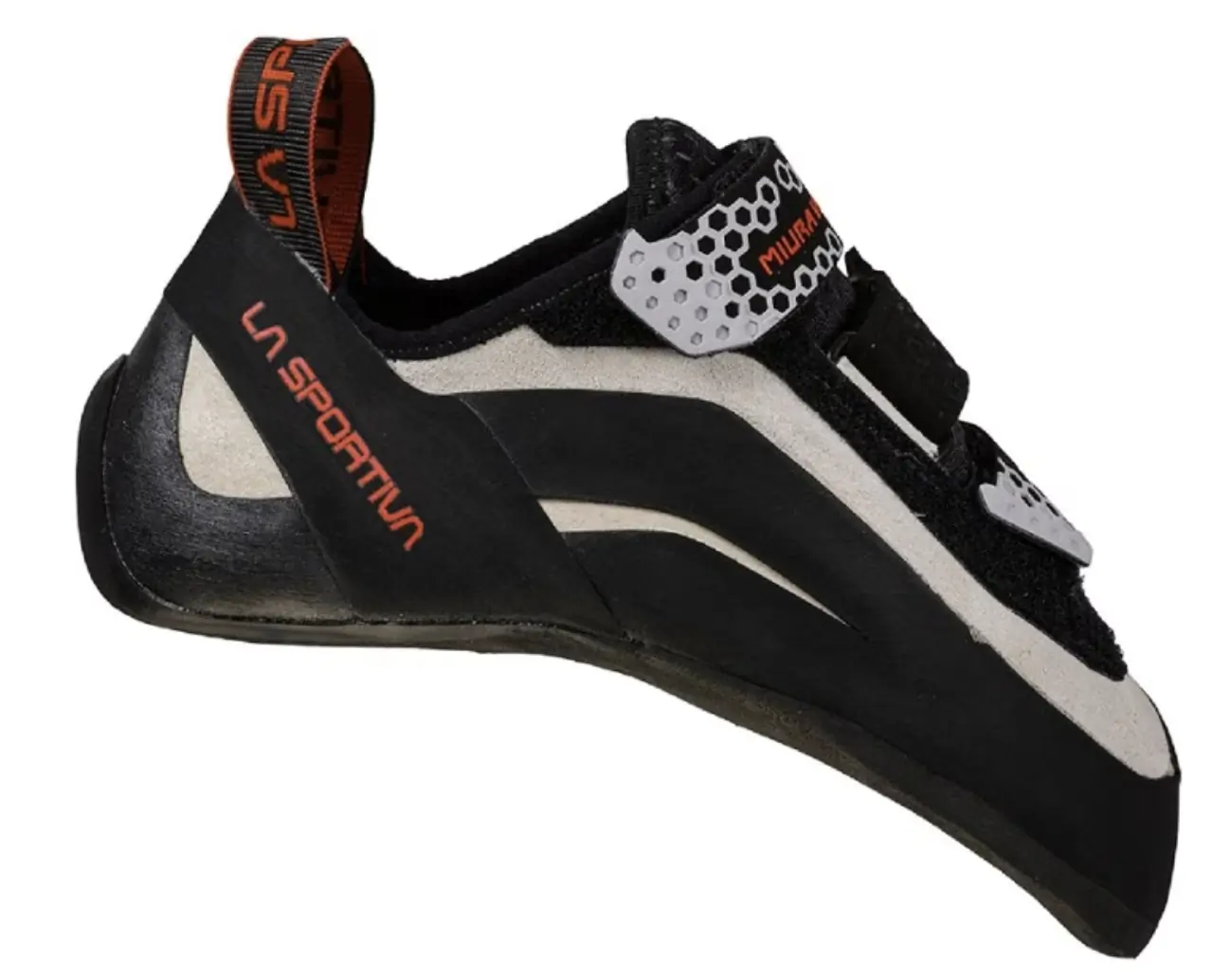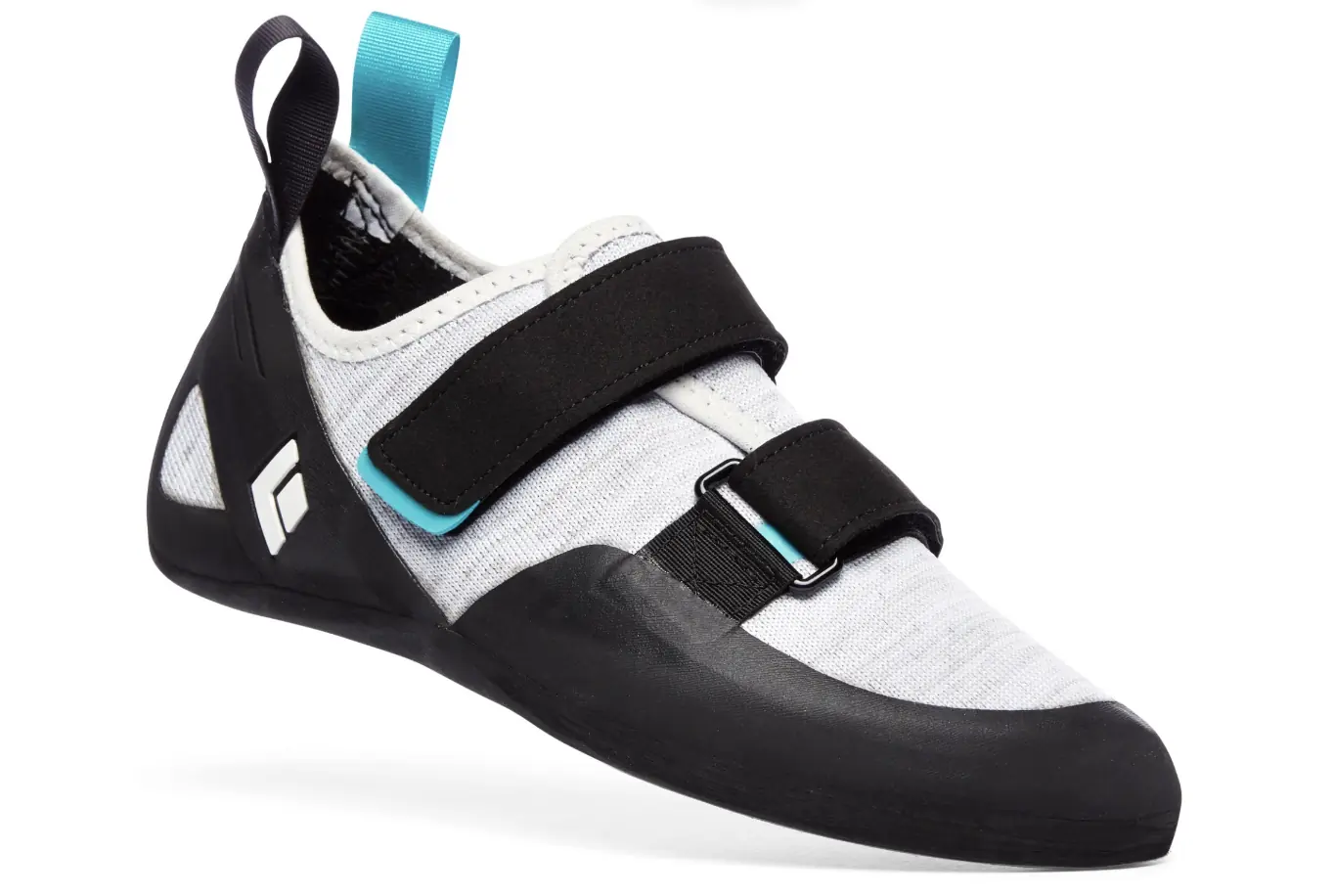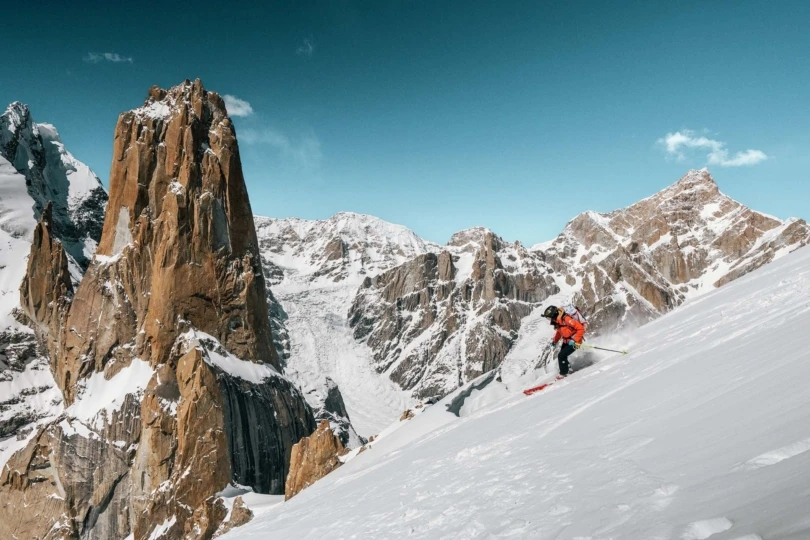Climbing shoes are incredibly nuanced and diverse in shape and feel. Finding the right shoe depends a lot on what type of climbing you’re doing and what type of rock you’re doing it on. Add in the fact that sizes, rubber type, and fit vary wildly from brand to brand, and it’s no wonder that finding the right shoe can be a challenge.
That’s why we’ve spent months seeking out and testing best climbing shoes to meet your climbing needs and goals, examining factors like the shoe’s profile, closure system, fit and feel, comfort, performance, and sensitivity.
These shoes smeared up multipitch slab, jammed into a range of crack widths, withstood drizzle, and hit the crag during 90-degree Fahrenheit summer heat. The routes were scattered from Canada to Colorado, on various North American granite, and ranged between trad climbing, sport climbing, and toprope.
Editor’s Note: This guide is fresh for a fall and winter of sending temps as of November 14, 2024, with the addition of a price value analysis.
The Best Women’s Climbing Shoes of 2025
La Sportiva Women’s Katana
- Closure: Laces
- Weight: 15.2 oz. (pair)
- Upper material: Microfiber/leather
- Rubber type: Half-sole 4mm Vibram XS Edge Rubber
Pros
- Great on a variety of rock and terrain
- Mild downturn makes it versatile for vertical and overhangs
- Edges and pulls well
- New women’s version comes with a split sole for increased sensitivity
Cons
- Must size differently for updated version
- Expensive
La Sportiva Finale
- Closure: Lace
- Weight: 15.6 oz. (pair)
- Upper material: Leather/microfiber
- Rubber type: 5mm Vibram XS EDGE rubber
Pros
- Inexpensive
- Stiff Vibram rubber gives it support and edging capabilities
- Great for beginner and intermediate climbers
Cons
- Soft leather upper can be susceptible to wear
- Not a sensitive shoe, which may make it less applicable to modern climbing gyms
SCARPA Instinct VS
- Closure: Velcro
- Weight: 14.2 oz. (pair)
- Upper material: Microsuede and leather
- Rubber type: 3.5mm Vibram XS Grip 2
Pros
- Slipper-like fit
- Moderately downturned, asymmetric shape great for bouldering or steep sport climbing
- Rubber toe patch for toe hooking power and protection
- Low-volume heel hook for better fit and sensitivity
Cons
- Wider toebox may fit some better than La Sportiva models
- Not a great all-around shoe due to aggressive shape and fit
La Sportiva TC Pro
- Sizing: Start with your street shoe size; the TC Pro can be sized up or down depending on preference and climbing style
- Rubber: 4mm Vibram XS Edge
- Profile: Moderately downturned
- Key features: Durable peel-resistant rand, ankle-high cuff
Pros
- Versatile (with a strong preference for granite trad climbing)
- Supportive
- Durable
Cons
- A bit heavy and clunky
La Sportiva Women’s Skwama
- Closure: Velcro
- Weight: 12 oz. (pair)
- Upper material: Leather, microfiber, rubber toecap
- Rubber type: 4mm Vibram XS Grip2
Pros
- Sensitive and aggressive for harder climbing
- Very comfortable slipper design
- S-Heel construction for superior heel hooking
Cons
- Not good for all-day vertical edging
- Leather upper stretches over time
SCARPA Vapor S Women’s
- Closure: Velcro
- Weight: 14.2 oz. (pair)
- Upper material: Synthetic
- Rubber type: Vibram XS Grip
Pros
- Very close fit and comfortable inner materials
- Low-volume, sensitive heel
- Good shoe for big edges, crack climbing, and gym climbing
Cons
- Very soft
- Slightly lower performance compared to other slippers
- Closure: Velcro
- Weight: 17 oz. (pair)
- Upper material: Leather, Lorica
- Rubber type: 4mm Vibram XS Grip
Pros
- Awesome high-arch support
- Aggressive shoe for bouldering and steep sport climbing
- High-performance shoe
Cons
- Velcro closure is long for narrow feet
- Not comfortable for all-day use
- Closure: Velcro
- Weight: 14.8 oz. (pair)
- Upper material: Microsuede, leather
- Rubber type: Vibram XS Grip2
Pros
- Nice intermediary choice for progressing climbers
- Excellent breathability
- Moderately downturned for versatility
Cons
- Squarish
- Slimmer toebox is not super-conducive for edging power
- Closure: Velcro
- Weight: 16.5 oz. (pair)
- Upper material: Leather
- Rubber type: 4mm Vibram XS Grip2
Pros
- Edging and pocket-pulling machines
- Very stiff
- Asymmetric build
Cons
- Not good for slab or crack climbing
- Can be a slightly painful shoe, allow for some time to break in
- Closure: Velcro
- Weight: 13.2 oz. (pair)
- Upper material: Synthetic knit
- Rubber type: 4.3mm rubber
Pros
- Competitive price
- Great shoe for beginners
- Flat and comfortable
Cons
- Missing top-notch rubber, so indoor climbing gets slick
- Climbers may want a higher-performing shoe after some time
Comparison Chart
| Climbing Shoes | Price | Closure | Weight | Upper Material | Rubber Type |
| La Sportiva Katana | $219 | Laces | 15.2 oz. (pair) | Microfiber/leather | Half-sole 4mm Vibram XS Edge Rubber |
| La Sportiva Finale | $130 | Lace | 15.6 oz. (pair) | Leather/microfiber | 5mm Vibram XS EDGE rubber |
| SCARPA Instinct VS | $209 | Velcro | 14.2 oz. (pair) | Microsuede and leather | Vibram XS Grip2 |
| La Sportiva Women’s Skwama | $199 | Velcro | 12 oz. (pair) | Leather/microfiber/rubber toe cap | 4mm Vibram XS Grip2 |
| La Sportiva Solution | $199 | Velcro | 17 oz. (pair) | Leather/Lorica | 4mm Vibram XS Grip |
| SCARPA Vapor S Women’s | $199 | Velcro | 14.2 oz. (pair) | Synthetic | Vibram XS Grip |
| La Sportiva TC Pro | $219 | Lace | 1 lb., 1 oz. (pair) | ECO leather/microfiber | 4mm Vibram XS Edge |
| SCARPA Vapor V | $199 | Velcro | 14.8 oz. (pair) | Microsuede and leather | Vibram XS Grip2 |
| La Sportiva Women’s Miura VS | $199 | Velcro | 16 oz. (pair) | Leather | 4mm Vibram XS Grip2 |
| Black Diamond Momentum | $100 | Velcro | 13.2 oz. (pair) | Synthetic knit | 4.3mm rubber |

How We Tested Women’s Climbing Shoes
Our Expert Testers
Miya Tsudome is one of the primary gear testers of this review. An avid rock climber of over ten years and experienced gear reviewer of over five, she brings her expertise in evaluating gear to bring you this comprehensive review of the best women’s climbing shoes.
Miya has climbed El Capitan in Yosemite Valley, and has sport climbed in far-flung destinations like Greece, Mexico, and Spain. She is also a former rock climbing guide for the Yosemite Mountaineering School, putting in many long days of climbing on glacier-polished granite walls.
Whether she’s standing on tiny granite pebbles, shoving her feet into splitter sandstone cracks, or heel hooking on volcanic tuff, she knows how much a good climbing shoe is vital for success. She’s also tested categories such as women’s climbing harnesses and climbing ropes, so you know she really knows her stuff.
Years of climbing on different terrain and in different disciplines have guided her to know what she is looking for in her climbing shoes, and she hopes to bring an objective view to the strengths and weaknesses of popular shoes for women today.
Our Testing Grounds
Living in Bishop, Calif., on the flanks of the Sierra Nevada mountains, Miya spends all of her free time climbing rocks, whether single-pitch sport climbing, multi-pitch alpine climbing, or sunny days out bouldering. She spent a month with several of the models in our lineup, taking them out for multiple, 6+ hour climbing days where she put them up to the test.
Miya went sport climbing in Bishop’s Owen’s River Gorge and Lee Vining’s Tioga Cliff, trad climbing in Yosemite Valley, multipitch alpine climbing in the High Sierra mountains, and bouldering in Utah’s Joe’s Valley. She feels lucky to live somewhere where she has so much amazing access and can really put climbing shoes through the wringer. It’s important to test climbing shoes on different types of rock and on different styles of climbing, and she did it all to bring you the best review possible.
Our Testing Process
Miya and the other testers on this guide spent weeks assessing the shape, fit, lacing systems, softness vs. stiffness, and strengths and weaknesses in performance to help you make the most informed decision for your next climbing shoe purchase. It’s crucial to test climbing gear in real-world scenarios, so we took each shoe out on our climbing days over the course of a month to test their capabilities.
It’s crucial to get the fit of your climbing shoes correct, and this will vary from person to person. We tested the fit of each model by purchasing our preferred performance size, which, for Miya, is 1.5 sizes down from her street shoe size. Fit also varies from brand to brand, so we made sure to note this in each of our reviews.
We examined the soles of each shoe to evaluate their softness vs. stiffness and noted what type of rubber was used and how many millimeters thick the rubber was. We tested the performance of each shoe by climbing on multiple different rock types and angles and noting how well they toed in on small holds or edged on tiny crimps, and which discipline of climbing they felt like they excelled the most in.
GearJunkie has been testing women’s climbing shoes since 2021 and stays as current as possible on all the new models hitting the market today.
Buyer’s Guide: How to Choose Women’s Climbing Shoes
Identify Your Climbing Style
“To choose a rock climbing shoe, analyze the terrain where you’ll take the shoes and determine where you’ll be doing 70-80% of your climbing. Then dial in the right fit,” said Stefanie Kamm, athlete manager and digital marketing coordinator for SCARPA North America.
Kamm started climbing in 2012 and climbs weekly in Boulder Canyon, Colo. So, she knows a thing or two.
One of our testers, Miya Tsudome, a former rock climbing guide in Yosemite National Park who has been climbing for 8 years, also has some advice to give:
“It’s nice to have a shoe that can do it all, but more often than not us rock climbers will have many different types in our quiver. If you like to boulder and climb overhanging sport routes sometimes, it will benefit you greatly to have a more aggressive shoe.

“If at other times you like to do long multipitches or go crack climbing, you’ll want a more comfortable pair. If you’re serious about climbing, don’t be afraid to buy a few to round out your arsenal.”
Shoe Shape & Fit
The shape, or last, of a climbing shoe greatly determines its purpose. In general, bouldering, overhanging, or vertical single-pitch routes need shoes with a tight, performance-type fit, also known as aggressive, down-cambered, downturned, or slightly downturned. The La Sportiva Skwama, La Sportiva Solution, and SCARPA Instinct VS are good examples of aggressive shoes.
A flatter last, like in the La Sportiva TC Pro, or La Sportiva Finale, might be more comfortable for multipitch and low-angle, sub-vertical climbs. Commonly, rock climbing guides and new climbers choose a flatter shoe for all-day comfort. As you progress or are drawn to harder styles of climbing, you may look to upgrade to a more aggressive model.
Shoe softness refers to the pliability of the rubber in the outsole, which increases sensitivity, or a climber’s ability to feel the rock features. The slipper-like La Sportiva Skwama is a good example of a sensitive shoe.
Comparatively, harder rubber provides more foot support and can be better when you need to stand on very small footholds on vertical terrain. The stiff La Sportiva Miura VS shoes are the wizards of this style of climbing.
A good fit is greatly determined by foot compatibility with that last shape and the shoe size. This is also a subjective measure, as everyone has a different foot shape. Make sure there are no air pockets around the foot or heel. Toes will curl under in a downturned shoe compared to a flat shoe.

Most people also size down from their street shoe size. If you haven’t done so before, try sizing down in half-size increments and see how that feels.
Your toes should always curl slightly, and your shoes should always feel tight for the best performance. If you prioritize all-day comfort, find a flat shoe where your toes barely curl.
Whether you choose a Velcro or lace closure system will alter the feel and fit, so try out both. Lace closure systems are typically more adjustable, while Velcro systems make it easier to take your shoes on and off. Also, a shoe’s materials affect the fit over time, as shoes with a leather upper will stretch while synthetic uppers will not.
Leather vs. Synthetic
Leather uppers are generally more durable than synthetic uppers. If you’re mostly trad climbing or spend a lot of time with your toes jammed in cracks, leather is the way to go. However, sizing can be tricky, as leather uppers stretch over time. Synthetic uppers stretch much less, and the fit you get out of the box is pretty much the fit you can expect for the life of the shoe.
Vegan footwear addresses leather uppers and footbeds. Some brands, like Evolv, are known for their vegan products.
When trying on shoes with leather uppers, be aware that they can stretch over time, sometimes up to a half-size larger. This is important when considering what size to buy, and sometimes it will benefit you to buy a size that feels a bit too tight, knowing they will stretch in the future.
Women’s-Specific Shoes
Overall, women’s-specific models have a lower-volume heel, narrower last, and softer or thinner rubber for easier flex and more sensitivity. We encourage you to try on a ton of shoes to find the foot mold that fits your foot the best.
Be open to wearing any shoe regardless of gender. Men with a lower-volume heel often prefer the women’s version. Women’s shoes also tend to have thinner or different types of rubber so that they are more sensitive for lighter climbers.
The women’s SCARPA Instinct VS, for example, uses XS Grip 2 rubber, which is softer and stickier. The men’s version uses XS Edge rubber to accommodate the typically higher weight of the male climber with a little extra stiffness.

Velcro vs. Lace-Ups
Climbing shoes with Velcro straps are easy to take on and off, making them a good choice for bouldering, gym climbing, and single-pitch climbing. Some models, like the La Sportiva Solution, have one integrated Velcro strap that zig-zags over the tongue of the shoe and can be easily pulled tight and attached via its Velcro tab. This ensures a nice, snug fit.
Other models, like the SCARPA Force V, have two Velcro straps across the top so you can dial in the fit over two parts of your foot.
Shoes with laces, on the other hand, can be cinched tight, and those who are very concerned with having their shoes fit as perfectly as possible for high performance will opt for models with laces such as our top pick, the La Sportiva Katana.
While either type can be and is used in all different styles of climbing, each will still have certain limitations. Velcro straps can work fine for many types of cracks, but may make it harder to fit into hand cracks and larger. Modern shoes with Velcro straps allow room for rubber on top of the toebox, which will greatly aid in toe hook maneuvers.
Lace-ups will have a slimmer profile overall and may be more appropriate for crack climbing. While lace-ups ensure that you’re able to fine-tune your fit, they may not be the best for steep bouldering where the laces can get in the way of toe-hooking.
Soft vs. Stiff
Soft versus stiff shoes come into play when you’re getting serious about finding a shoe to match the terrain you’ll be climbing on — and pushing yourself to try harder grades, making this more applicable to intermediate climbers.
Our best recommendation for beginners is the La Sportiva Finale for its comfortable, flat profile and softer feel. Having a softer shoe is good if you’re just starting out because it’ll allow you to feel footholds more and learn better technique.
If you’re graduating from your beginner shoes, you’ll wonder what direction you need to go in for your next pair. The Scarpa Vapor V strikes a great balance between stiffness and sensitivity, with a moderate downturn that makes it a good all-around, nonspecialized shoe. The La Sportiva Katana could be the next upgrade after this, for its high-performance rating across a variety of terrain and stiffer construction, which allows you to learn to stand on small edges.
Soft shoes like the La Sportiva Skwama are great for steep or off-vertical terrain because, paired with their aggressive downturn, they allow you to pull in on small footholds and smear on bad feet and small cracks.
Stiff shoes, like the La Sportiva Miura VS or the La Sportiva TC Pro, are made more so for edging and climbing on small pockets. With so much stiffness throughout the shoe, you are able to more easily stand on dime-size edges than with a flexible shoe like the Skwama. This is because your whole foot is supported.
In summary, if you find yourself climbing on steeper routes or, conversely, slabby routes and cracks, a softer shoe like the Skwama would be a good match. If you’re more into vertical routes with pockets or tiny edges, a stiffer model like the Miura VS would be the shoe for you.
Price & Value
Climbing shoes can range in price from anywhere between $100 to $220. Most of the climbing shoes in our review are priced around the $200 range, which is typically what you can expect to spend for a high-quality pair of shoes these days.
Budget
The budget category for climbing shoes ranges between $100 and $130. These climbing shoes are typically reserved for beginner or casual climbers who don’t need high-performance footwear and don’t want to spend too much money on something they might only use from time to time.
The La Sportiva Finale ($130) is our favorite shoe in the budget category, because not only is it affordable, but it performs exceptionally well for such a low price point. The Black Diamond Momentum ($100) is the least expensive shoe in our lineup and is a great choice for the casual gym climber. Both of these shoes have a flat profile, aren’t the most sensitive, and lack the higher-quality rubber found in more expensive climbing shoes.
Mid-Tier
Most of the climbing shoes in our review are in this mid-tier category, which is right around $200. For this price, you’re guaranteed to get a high-quality climbing shoe that can range from an all-around workhorse to a more specified performer. The La Sportiva Women’s Skwama ($199) is one of our lead tester’s favorite shoes for its versatility in performance whether sport climbing, crack climbing, or bouldering.
The La Sportiva Solution ($199) is another popular choice for its strengths in steep sport climbing and bouldering with its ultra-downturned design and robust heel. There are so many shoes to choose from in this price category, and most every climber will find something to suit their needs without having to spend much more. Though if you want an even more specific type of shoe for a style of climbing, you can expect to pay around $20 more for a premium pair.
Premium
While there is a big jump from budget to mid-tier in terms of price and performance, there isn’t that big of a jump between mid-tier and premium. The most expensive climbing shoes on the market right now are around the $210-220 range. For some shoes, like the La Sportiva TC Pro ($219), this price increase makes sense due to there being more material for ankle protection, and perhaps the eco-leather upper is more expensive to produce.
Our top pick, the Katana Lace ($219) is also the same price but without these same characteristics. Both of these shoes are powerful edging shoes with 4mm Vibram XS EDGE rubber which could perhaps be more expensive to manufacture, justifying the higher price tag. All in all, most climbers will be happy with mid-tier priced climbing shoes, but if you are looking for more specified edging performance, you will only have to pay a little more for these premium models.
Frequently Asked Questions
The best climbing shoe is the one that fits well and supports your climbing style and goals. Some of the leading climbing shoe brands — like Tenaya, La Sportiva, and SCARPA — are generally well-regarded, but personal preference is the most important factor.
On this list, we’ve named the SCARPA Force V as our favorite beginner climbing shoe. The Force V is comfortable, durable, and adaptable to a wide variety of foot shapes and climbing styles.
For new climbers, comfort is more important than advanced features like a downturned last or a massive patch of toe rubber. The Force V is precise enough to progress in the gym or at the crag, but ultimately it was designed for comfort. With the Force V, new climbers can focus on learning the sport, improving, and having a good time.
Most climbers prefer not to wear socks with their climbing shoes. It’s generally accepted that wearing socks decreases sensitivity and reduces the effectiveness of your climbing shoes.
These days, climbing shoe companies are working hard to make thinner, more sensitive shoes, and wearing socks is often seen as a step backward.
However, when climbing in cold conditions, some climbers find a pair of socks can be an essential way to maintain warm feet. In the end, it’s all personal preference. If you like to wear socks, wear socks!
That depends. Many advanced shoes are designed to be worn with the toes curled to maximize precision and toe power.
When the toes are slightly curled, many climbers find it easier to transfer power to the point of the shoe and stand comfortably on tiny footholds. This is especially important in shoes that are both stiff and aggressive.
However, curled toes are not comfortable, and such an aggressive fit is unnecessary for many climbers. For all-day comfort in the gym or on multipitch routes, a roomier fit is probably the way to go. Beginning climbers should prioritize comfort above all else.

